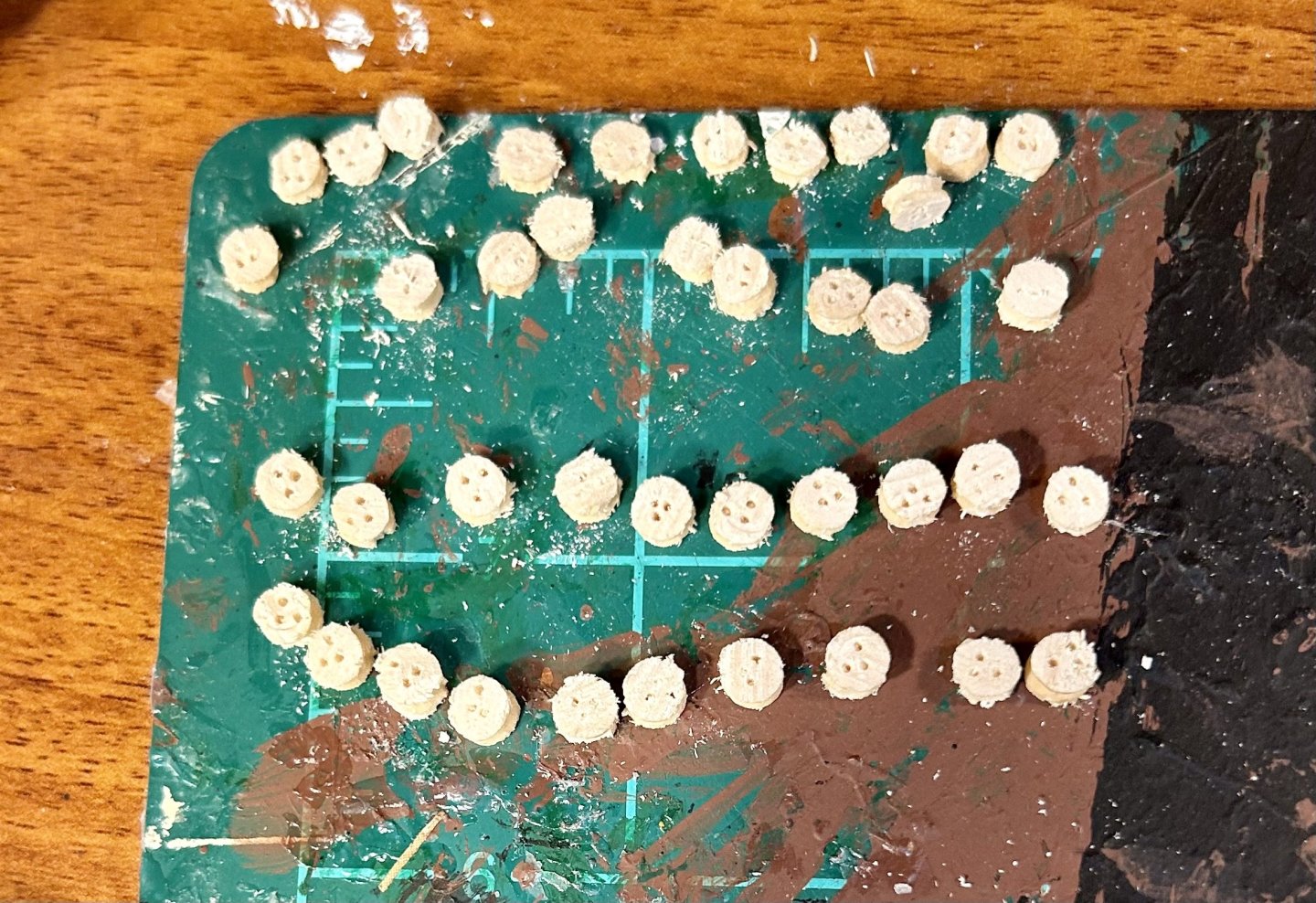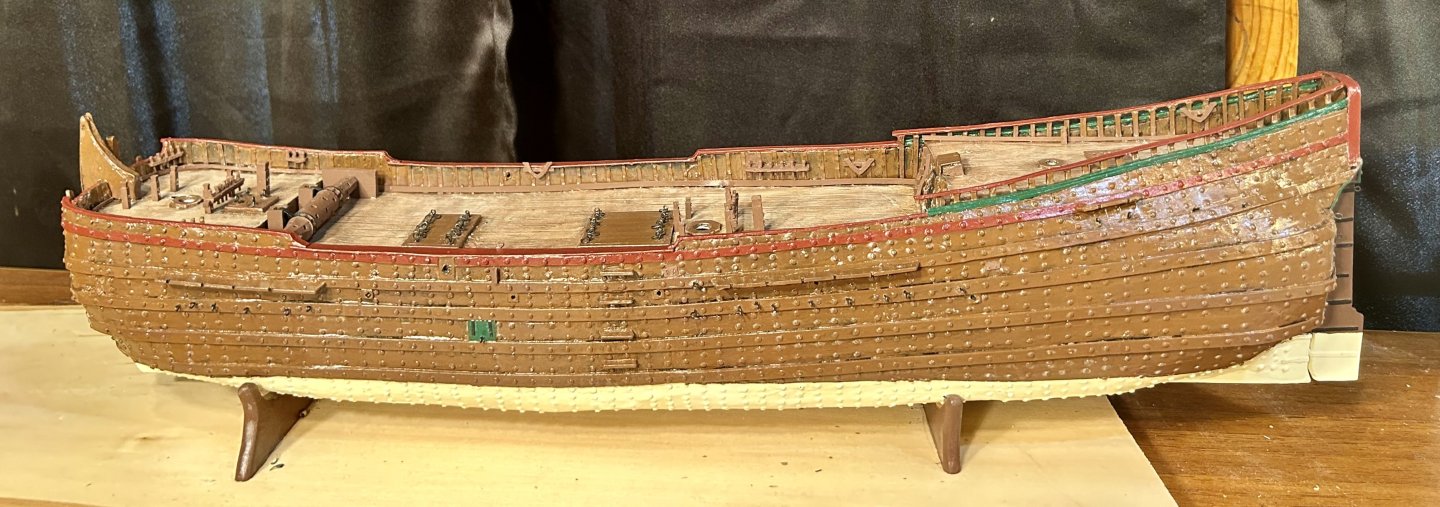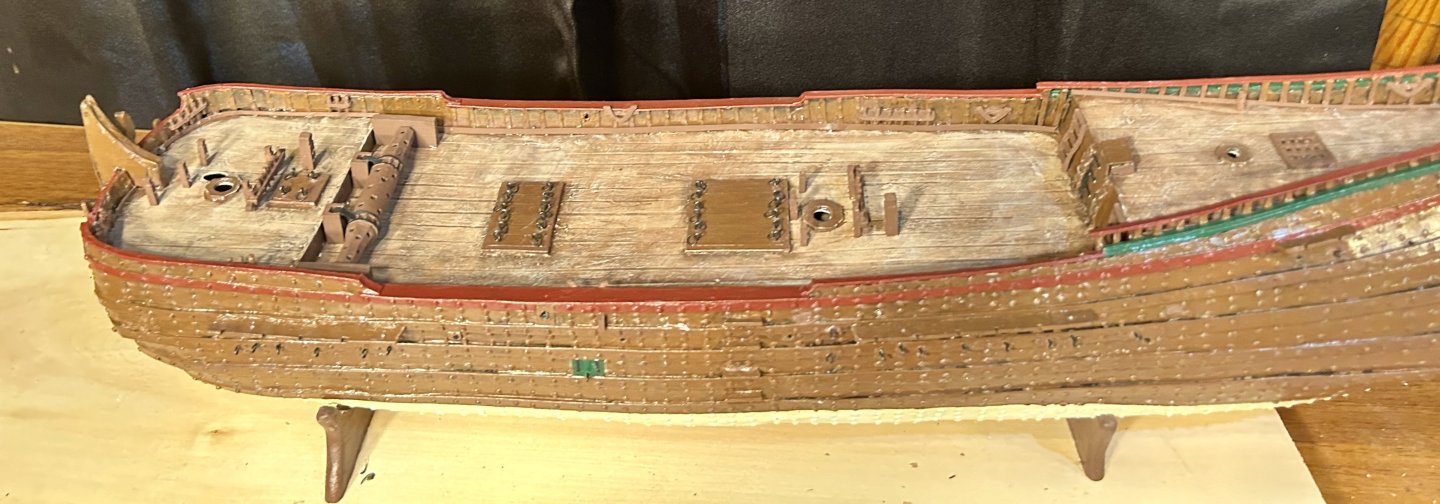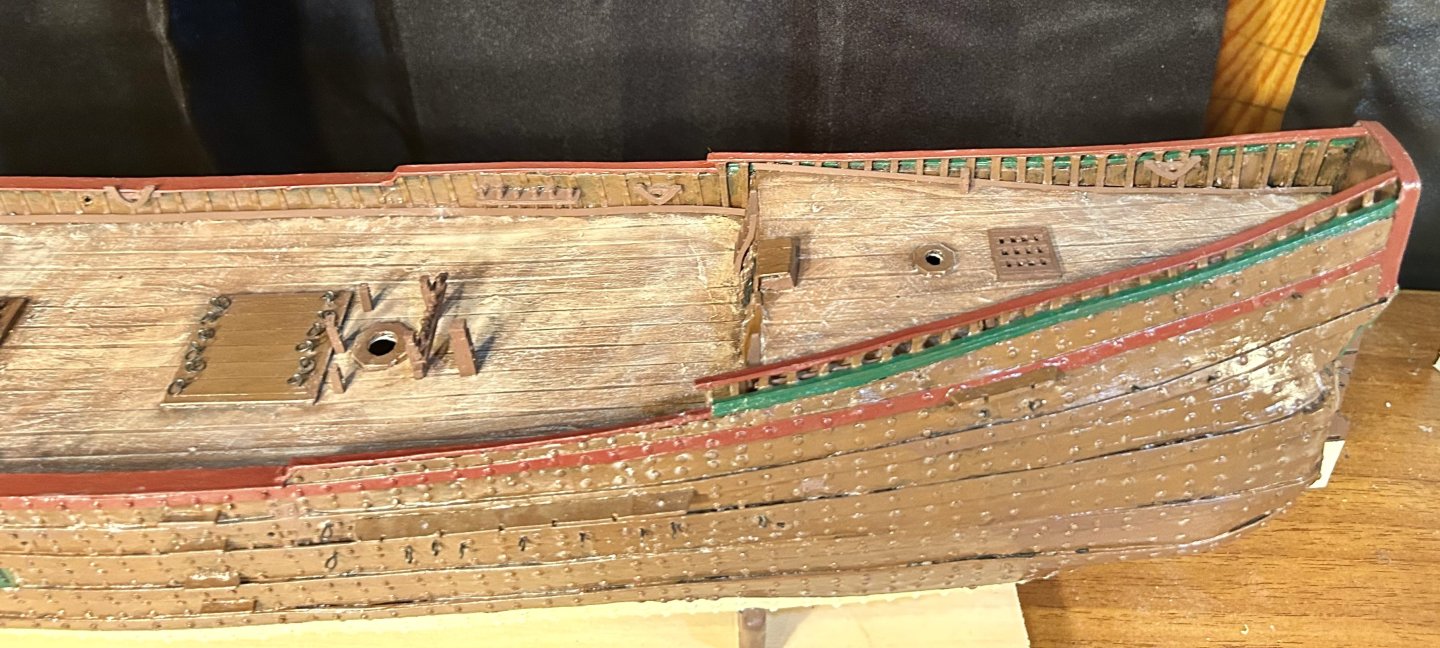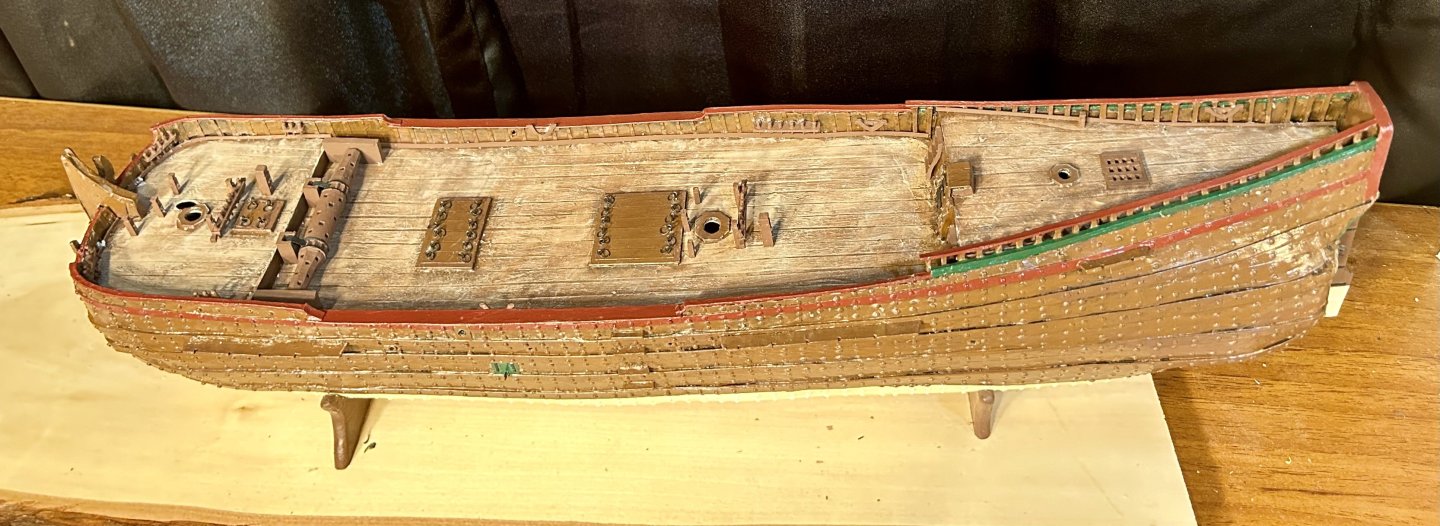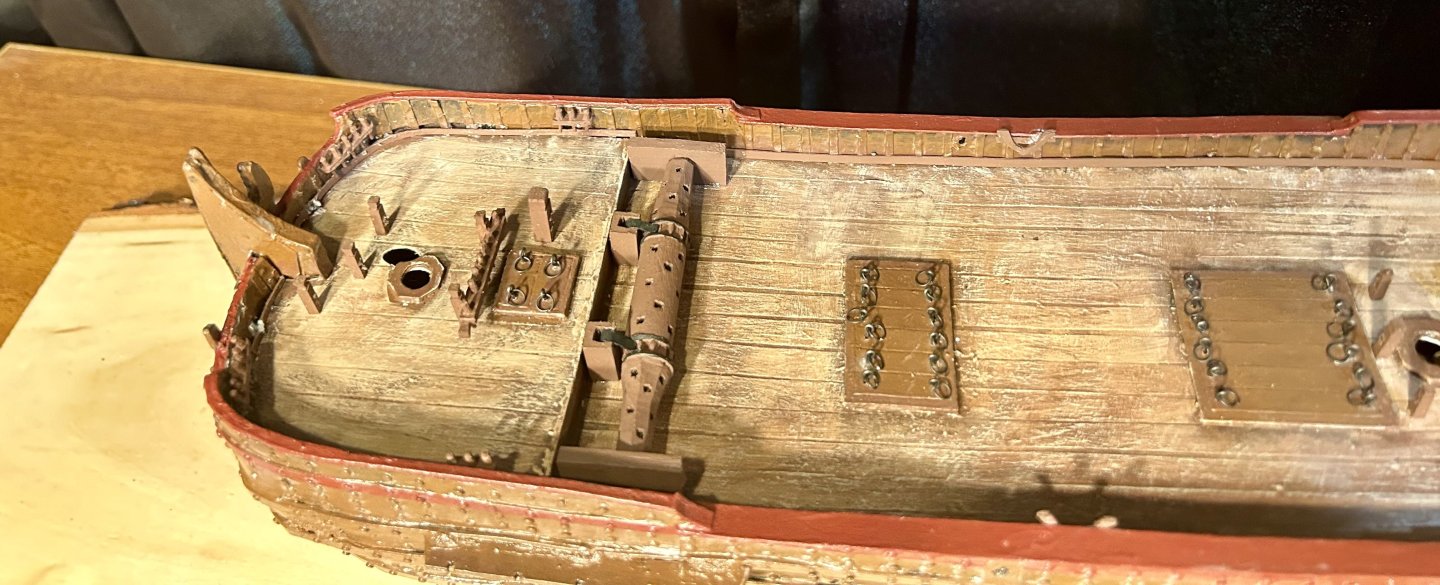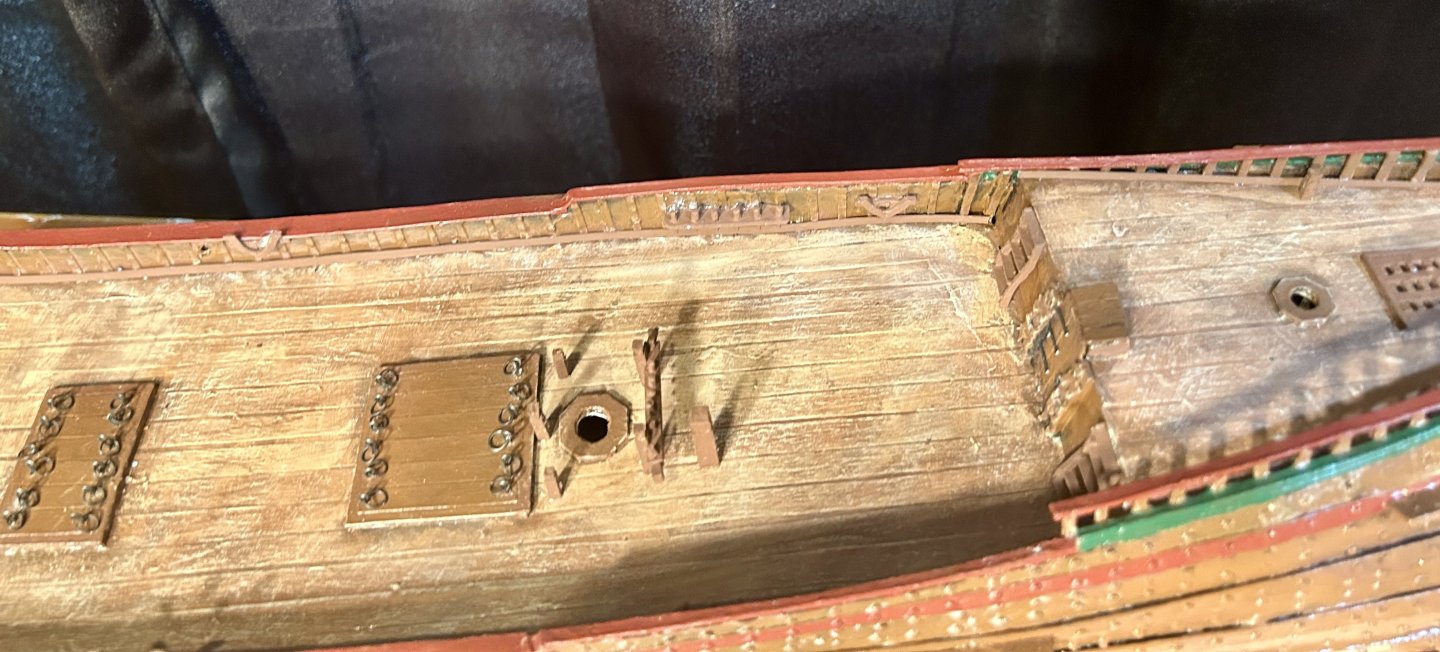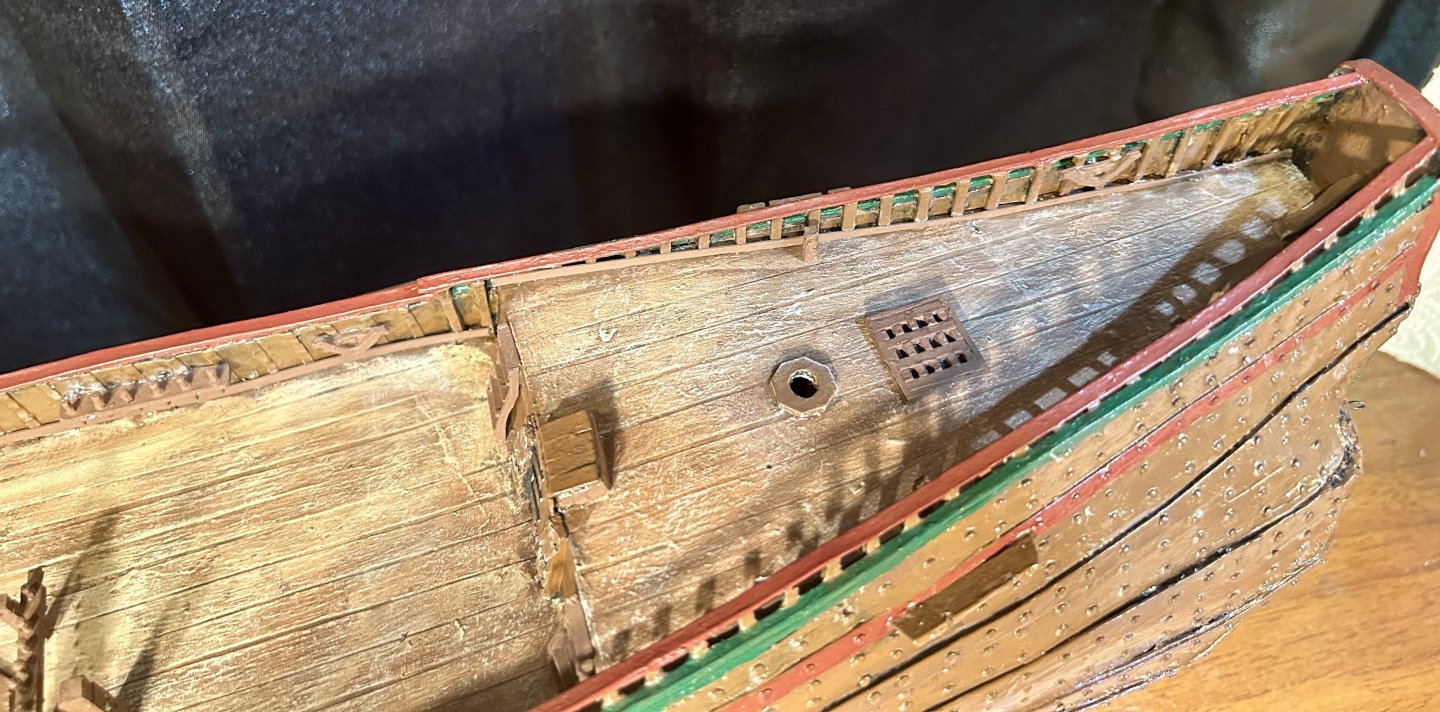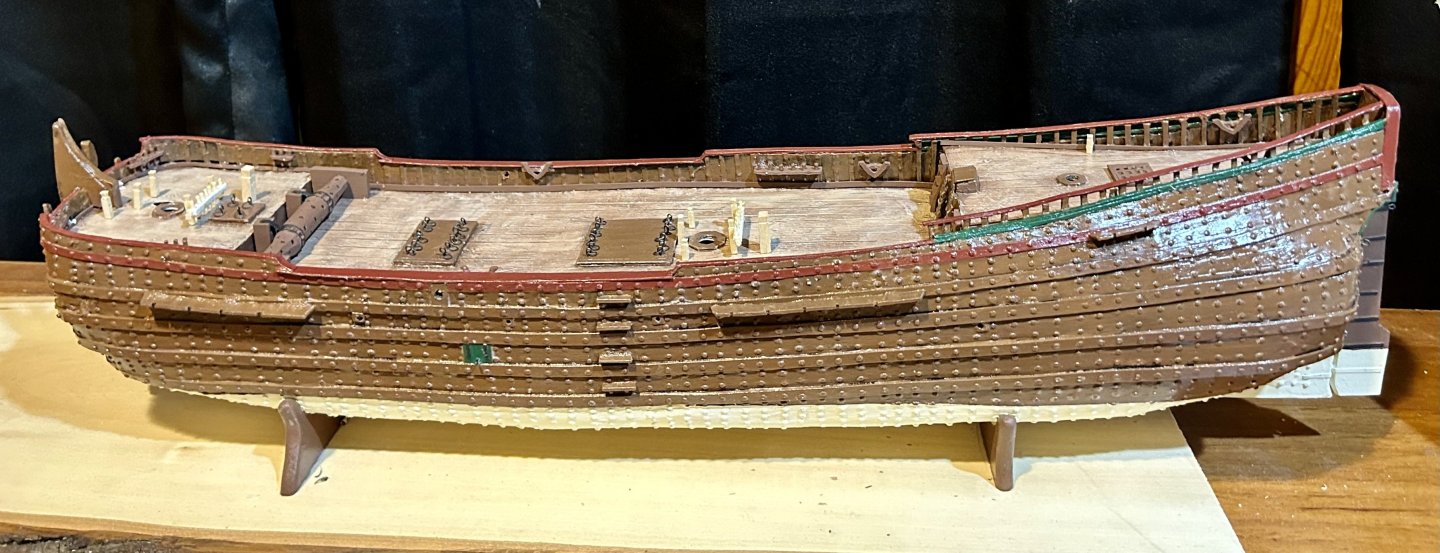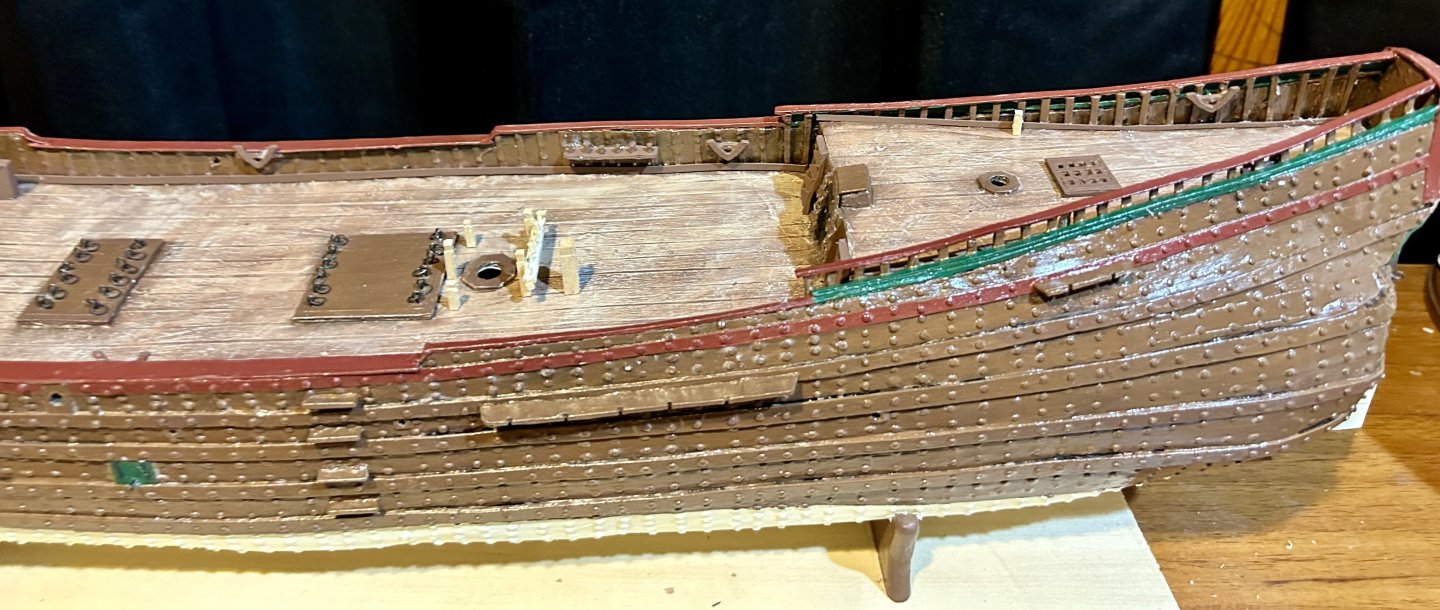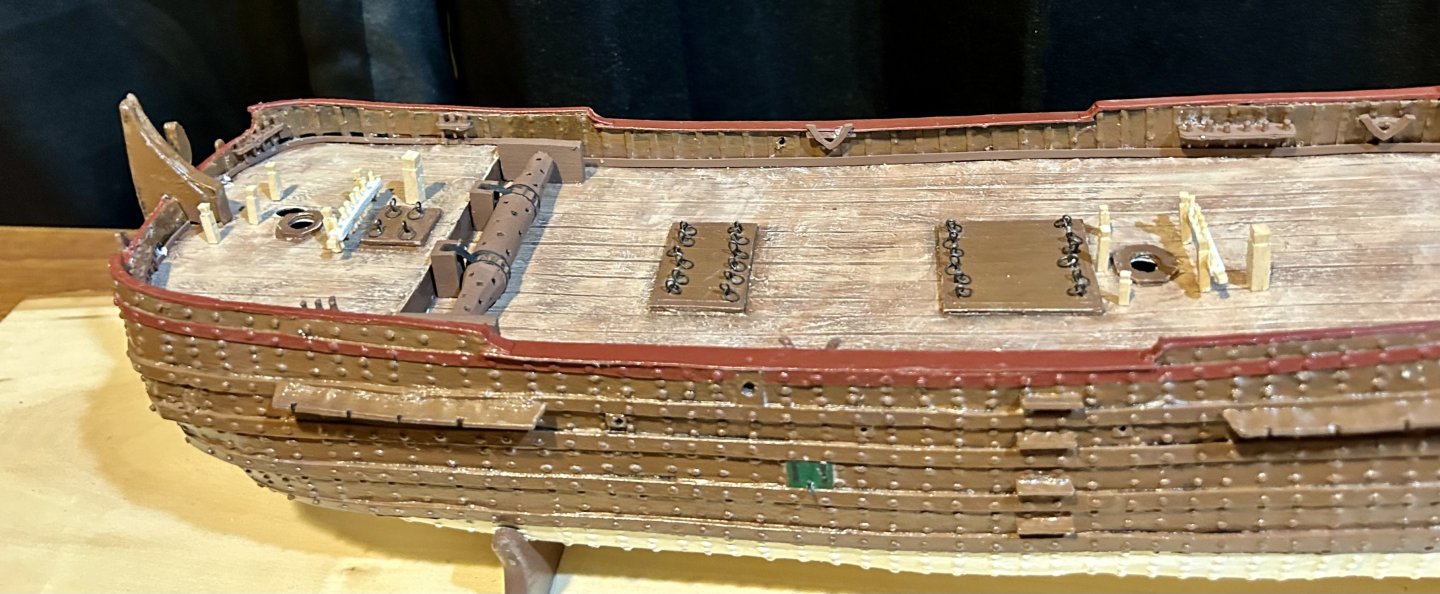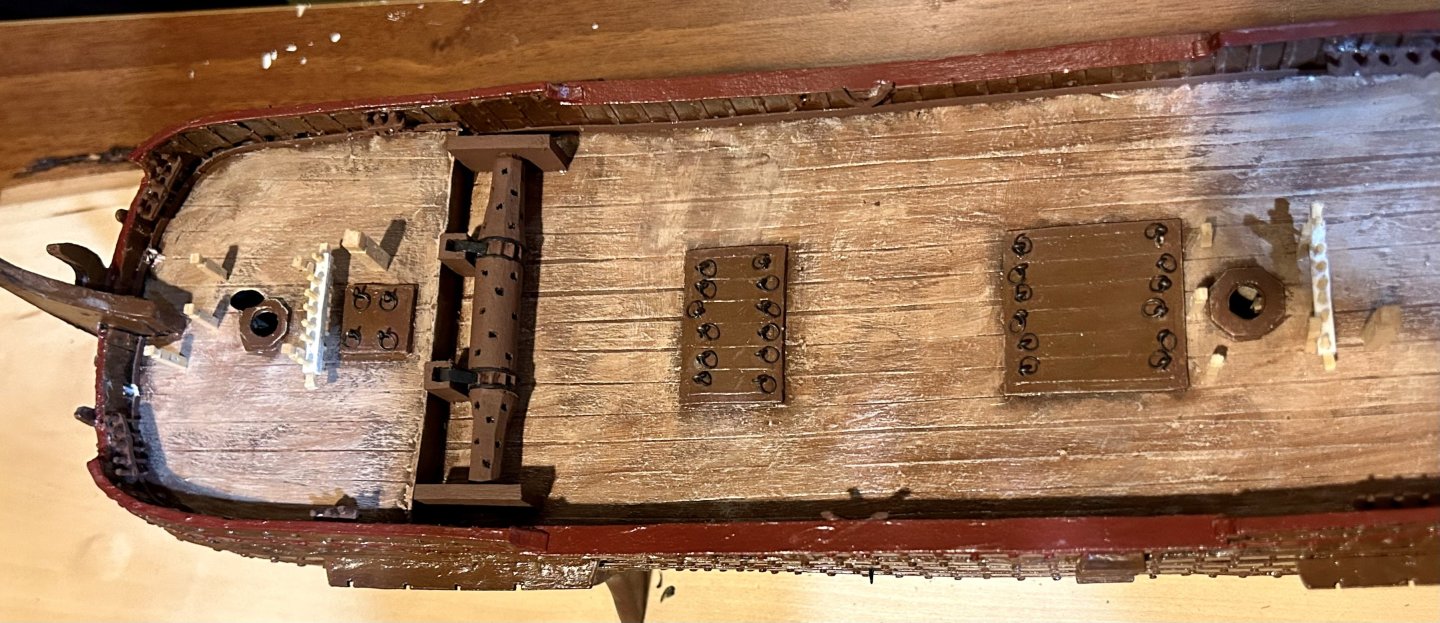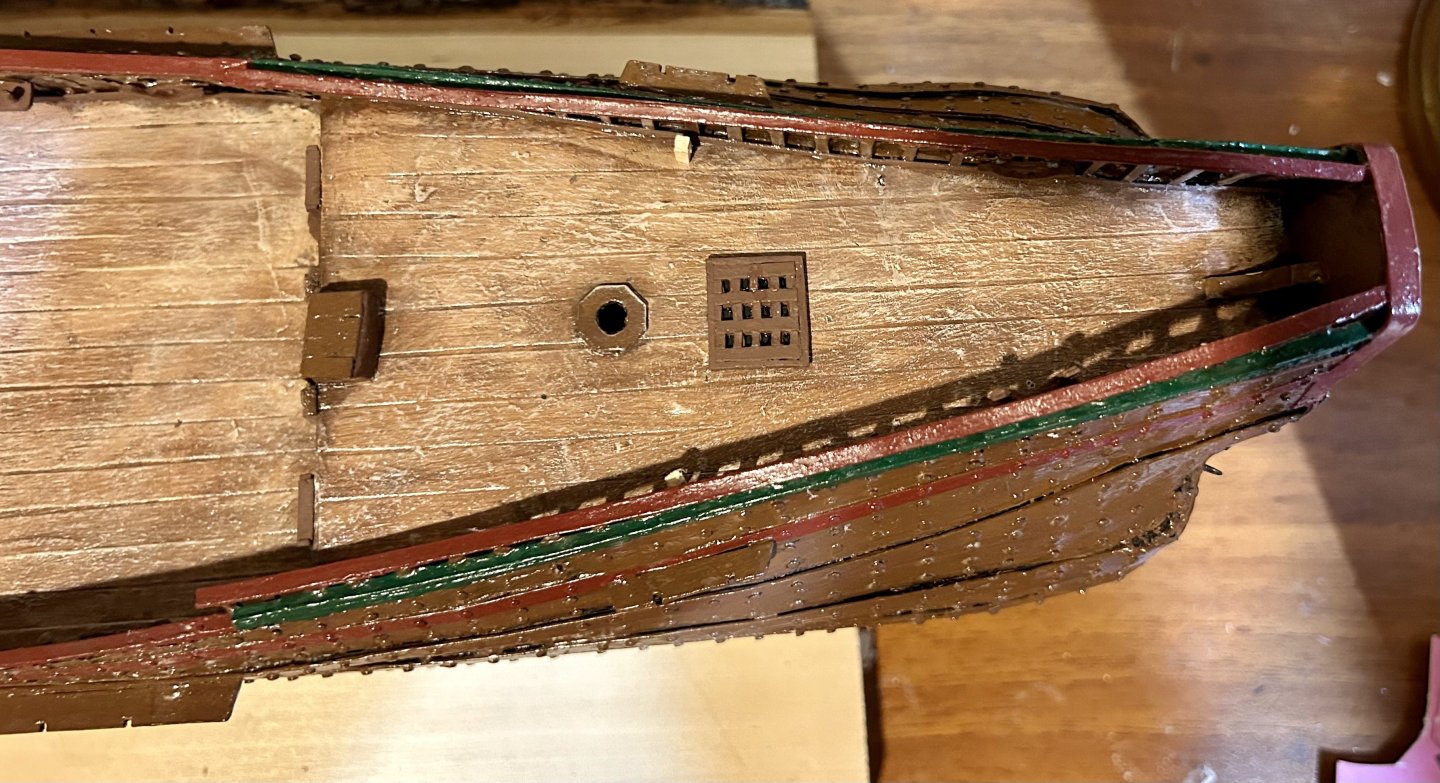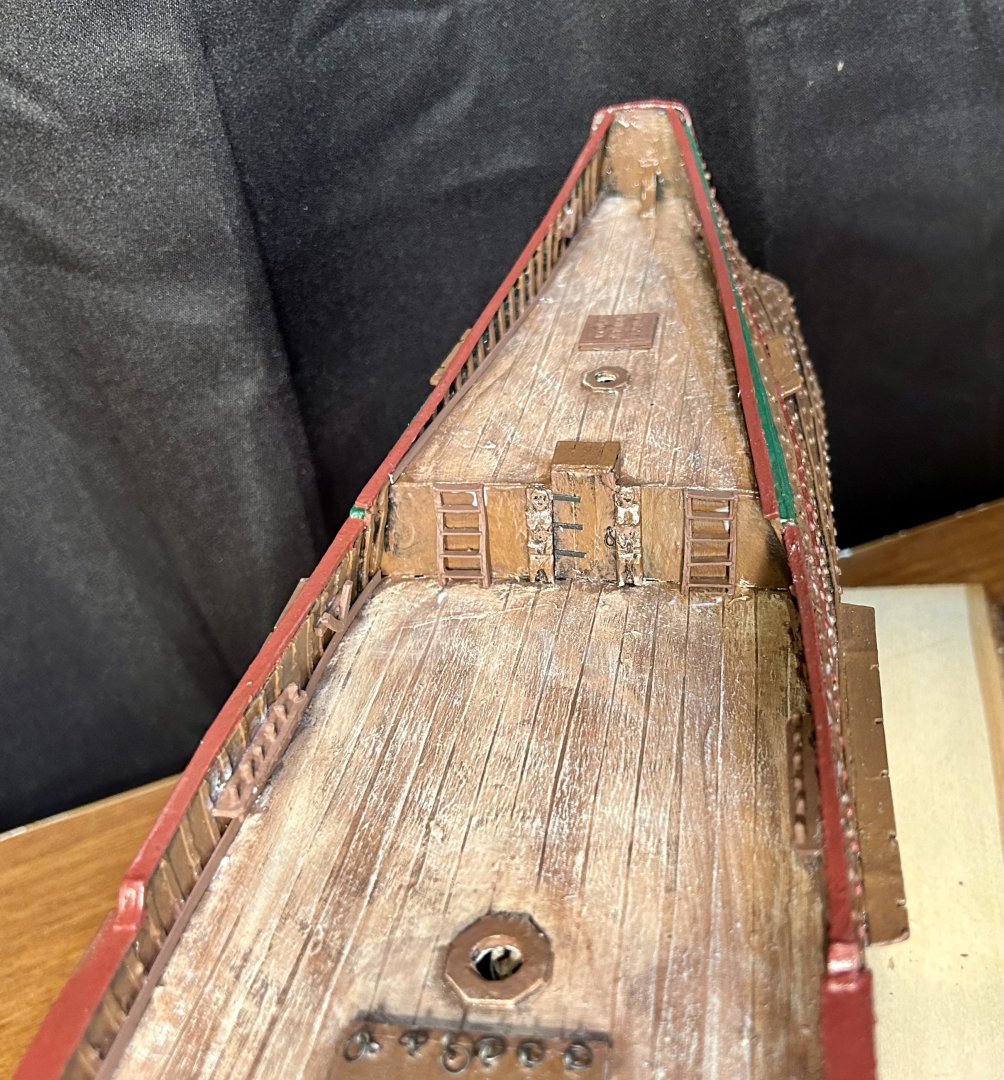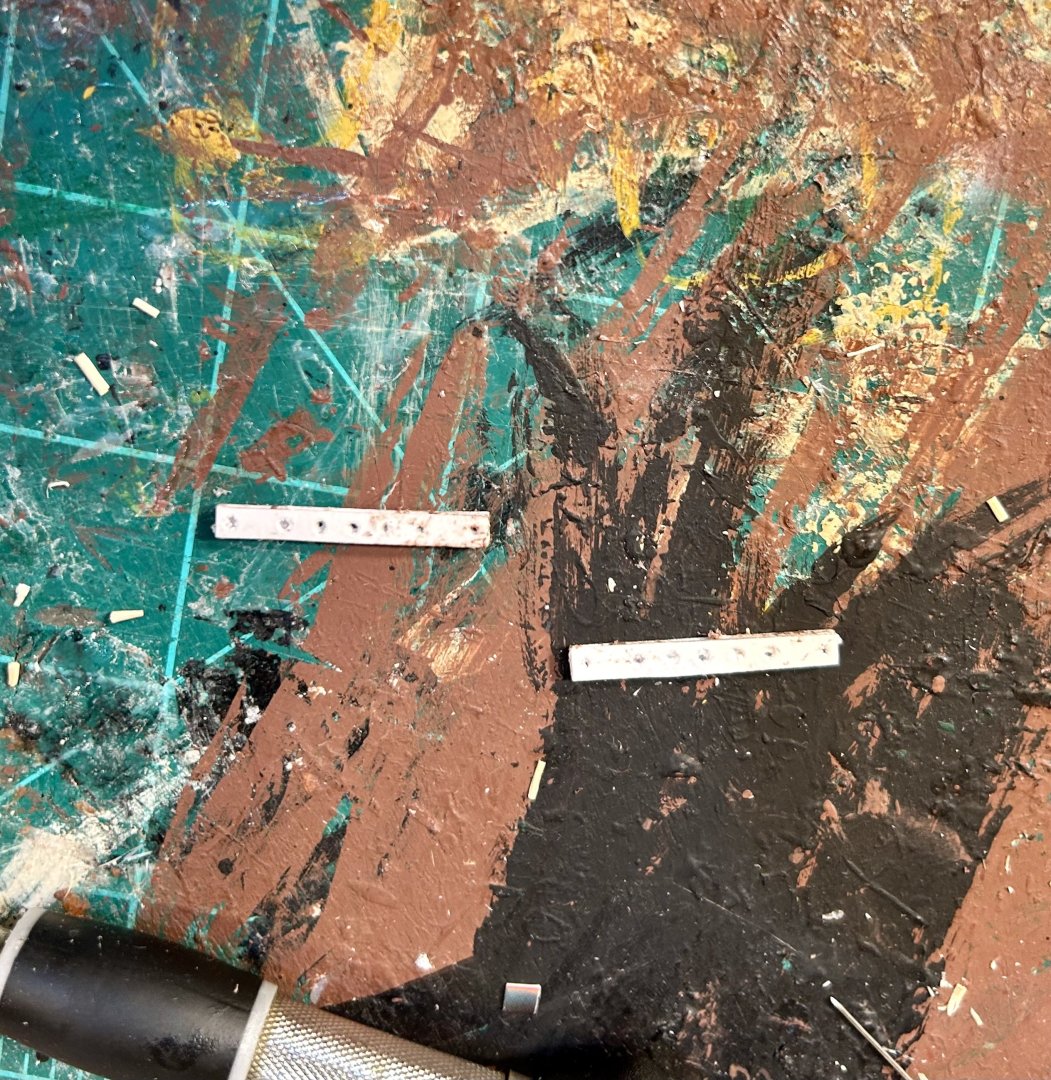
GrandpaPhil
NRG Member-
Posts
4,854 -
Joined
-
Last visited
Content Type
Profiles
Forums
Gallery
Events
Everything posted by GrandpaPhil
-
Welcome!
-
Welcome!
-
Alright, I figured out the 1/8” diameter deadeyes: It took me two hours and nearly 20 attempts to get 5 good ones. I need 30 of them. First, I mark the holes. Second, I use a straight pin as a center punch. Third, I drill the hole. Fourth, I cut the groove around the deadeye with my trusty scalpel. Fifth, I cut the deadeye off of the dowel rod with my trusty razor saw. Lastly, I CAREFULLY finish drilling the holes. All movements throughout this process must be slow and measured or the deadeye will disintegrate.
-
Welcome!
-
Welcome!
-
Speaking of deadeyes, here’s 40 x 3/16” deadeyes. I only needed 36 of them, but I always make extra. These are not anywhere near as nice as machine made deadeyes or those made by other people on this forum, but they will fulfill the function and look decent once installed. I’ll clean them up a bit when I ink them brown. I need 30 of them now that are 1/8” diameter. Those will be interesting.
-
All eyebolts are installed in the hull. Touch ups are done. The hull is now ready for final sealing and weathering. I have to let the model dry overnight so the paint can cure prior to sealing. This prevents paint bleed over. Once the sealant dries I’ll drybush the hull to make it look well used but well cared for. Then I’ll run a drill bit through all holes to clear them. After that it will be time to install chainplates with their respective fittings. Somewhere along the way the hull rigging will get done to include the anchors. I’m getting ready to make the deadeyes now.
-
Alright, I did some research. I have a plan, have perused my plans and have a good idea of what I need to do. I just found out that I will be making multiple types of blocks, including some that I had never heard, such as the ramshead block and the Continental lifting block. I have heard of fiddle blocks, but have never used them. The learning process is half the fun for me. I am thoroughly enjoying this model. I have only completed two square rigged vessels, but neither had even half of the rigging that they should have, so rigging this model with a full set of rigging lines will be a first for me. The major benefit is that after I build this, the Revenge should be a lot more manageable. Now to finish the hull fittings and get the rest of the painting done. Then I can add hull rigging. The deadeyes and chain plates, along with the covering pieces will be among the final pieces that get added to the hull.
-
All primary fittings inside the bulwarks are complete and installed. I have two pieces to make for the hull, sheaves that one set of rigging lines run through. Then I need to complete all touch ups, seal the model and apply all weathering coats to make this ship look well used, but well cared for. I want this ship to look like some guy’s livelihood that he used to take care of his family. That is my goal. This looks like the 17th Century equivalent of an owner-operator’s Mack Truck to me and that’s the look I am going for. As soon as I figure out how I am going to rig this model, I will complete all of the rest of the eyebolts and other secondary fittings required to belay everything. The masts, sails and standing rigging are easy. It is tracing out all the running rigging and where to belay everything to that is difficult for me. More the belaying part than anything else.
-
Can I use the belaying plan for a fluyt on a cat and stay approximately within historical bounds? The rigging appears similar. I figured it out. I was thinking too hard about it. This is a new model subject area for me. I did some more research. Everywhere lines go on the main rigging plan, I can find something to belay to.
-
All deck fittings are now made! The bitts all have steel pins in them and are sitting in their holes right now They are not glued. They will get painted in the near future and permanently installed. Next I have a couple minor hull fittings, then I can touch up all paint and reseal/weather the entire model. After that I can get all hull rigging done, to include anchors, chainplates and deadeyes. Then there will be one last round of weathering/painting of the hull. After that it will be time to permanently install the model on its base.
About us
Modelshipworld - Advancing Ship Modeling through Research
SSL Secured
Your security is important for us so this Website is SSL-Secured
NRG Mailing Address
Nautical Research Guild
237 South Lincoln Street
Westmont IL, 60559-1917
Model Ship World ® and the MSW logo are Registered Trademarks, and belong to the Nautical Research Guild (United States Patent and Trademark Office: No. 6,929,264 & No. 6,929,274, registered Dec. 20, 2022)
Helpful Links
About the NRG
If you enjoy building ship models that are historically accurate as well as beautiful, then The Nautical Research Guild (NRG) is just right for you.
The Guild is a non-profit educational organization whose mission is to “Advance Ship Modeling Through Research”. We provide support to our members in their efforts to raise the quality of their model ships.
The Nautical Research Guild has published our world-renowned quarterly magazine, The Nautical Research Journal, since 1955. The pages of the Journal are full of articles by accomplished ship modelers who show you how they create those exquisite details on their models, and by maritime historians who show you the correct details to build. The Journal is available in both print and digital editions. Go to the NRG web site (www.thenrg.org) to download a complimentary digital copy of the Journal. The NRG also publishes plan sets, books and compilations of back issues of the Journal and the former Ships in Scale and Model Ship Builder magazines.




